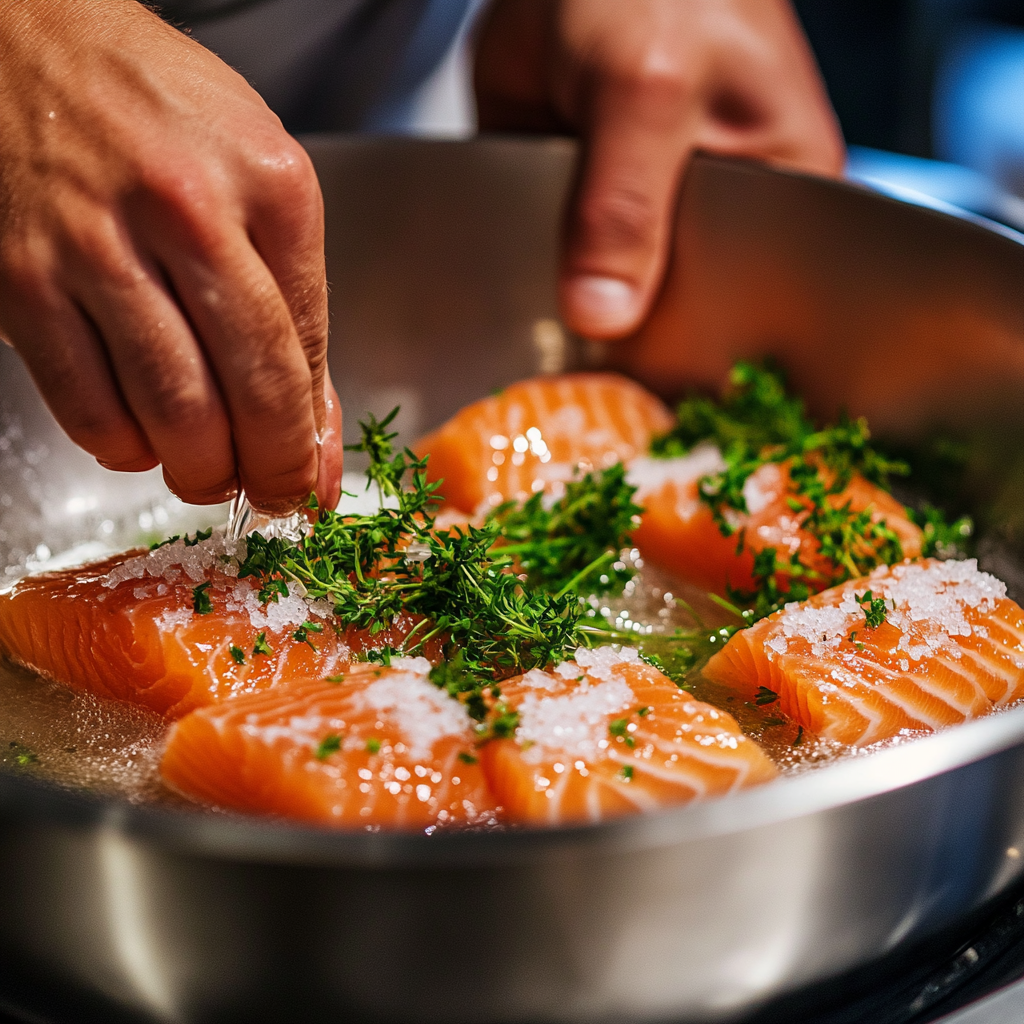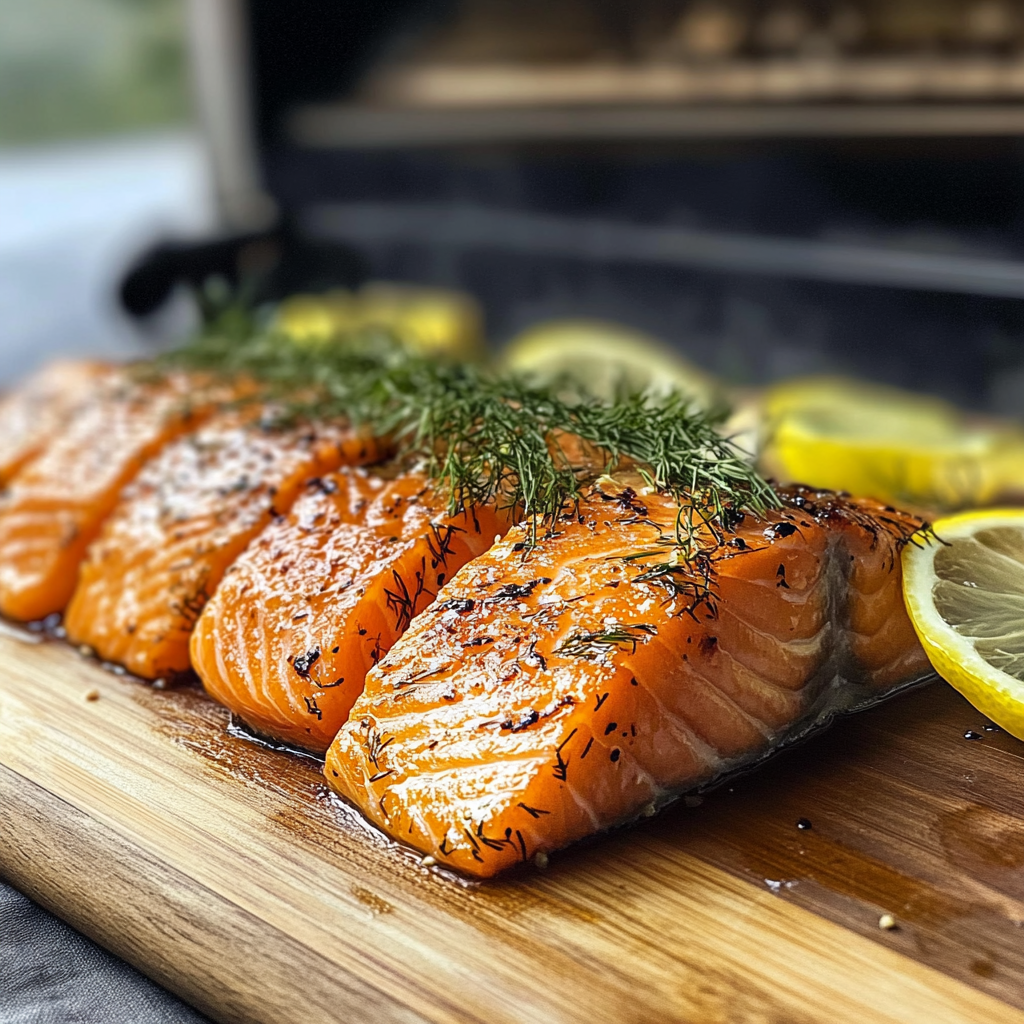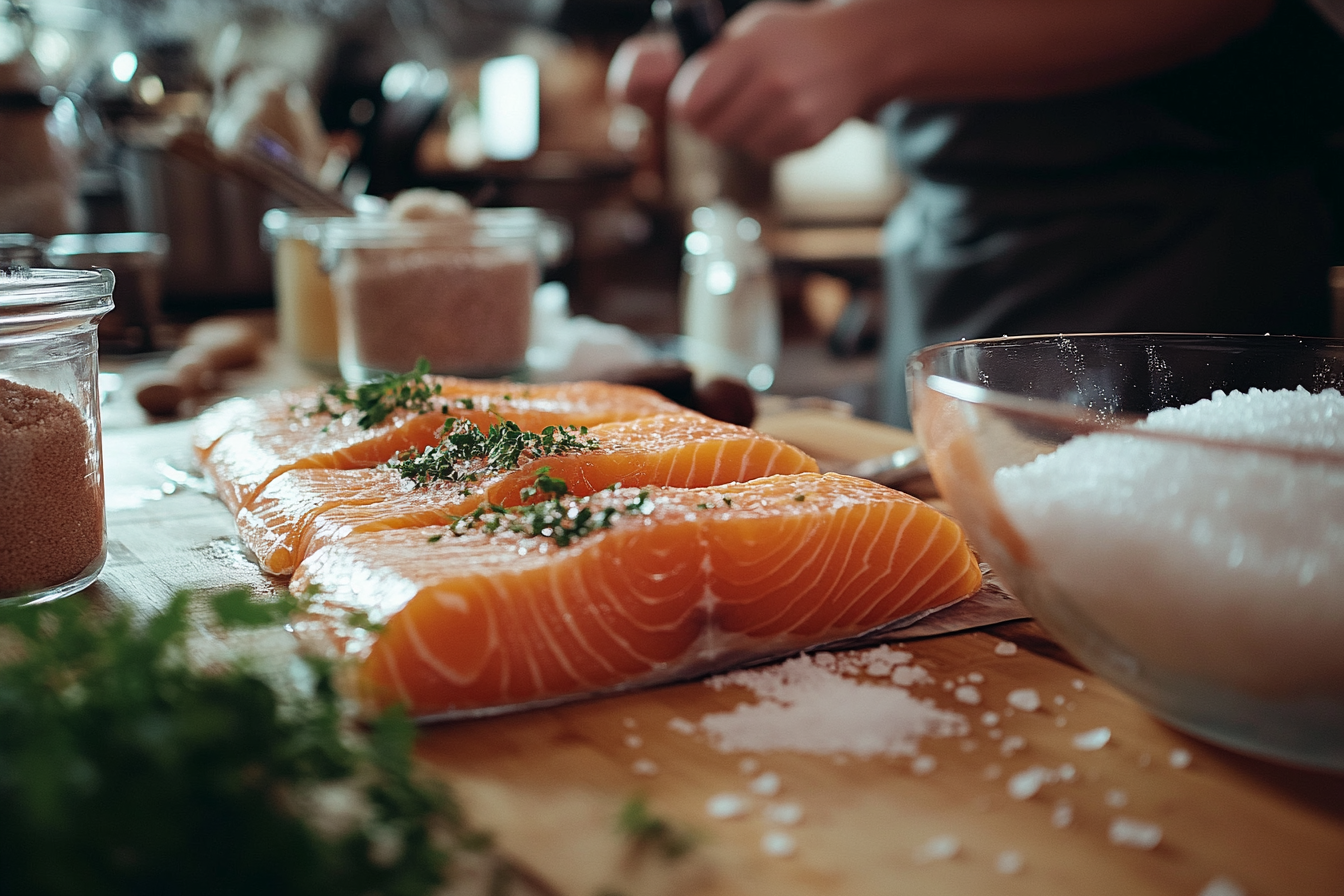Introduction
Smoking salmon is a beloved culinary tradition, but when it comes to preparation, there’s one crucial step that divides opinion: brining. Do you really have to brine salmon before smoking, or can you skip this step without compromising flavor and texture? This is a question many smoking enthusiasts face when planning their next seafood adventure.
In this comprehensive guide, we will delve deep into the brining process, exploring whether it’s a must for smoking salmon. We’ll discuss its benefits, provide a step-by-step brining guide, and offer alternatives for those who want to try different methods. By the end of this article, you’ll be equipped with all the information you need to make an informed decision about whether brining is worth your time.
What Is Brining?
Before we dive into whether brining is necessary for smoking salmon, it’s essential to understand what brining is and why it’s traditionally used in many smoked fish recipes. Brining is a method of soaking fish or meat in a saltwater solution, often with added sugar, spices, and herbs. This process enhances the moisture content of the fish, locks in flavors, and helps improve texture.
Brining is an ancient technique, historically used to preserve food. The high salt concentration inhibits bacterial growth, helping food last longer. While we no longer rely on brining for preservation in the age of refrigeration, brining still plays a significant role in flavor development and moisture retention during cooking—particularly when smoking.
You can find a detailed breakdown of different smoking techniques in our smoked salmon recipe guide.
Why Brine Salmon Before Smoking?
1. Moisture Retention
One of the primary reasons for brining salmon before smoking is moisture retention. During the smoking process, salmon is exposed to low, slow heat for extended periods. Without proper preparation, this can dry out the fish, leaving you with a tough, chewy product instead of the rich, tender salmon you crave.

When you brine salmon, the salt in the brine solution alters the proteins in the fish. This process allows the fish to absorb water, creating a barrier against moisture loss during smoking. By the time your salmon comes out of the smoker, it will be juicy, succulent, and bursting with flavor.
2. Enhancing Flavor
Brining not only locks in moisture but also enhances the flavor of the salmon. The salt, sugar, and additional spices in the brine penetrate deep into the flesh of the fish, infusing it with layers of taste. You can add various herbs, garlic, peppercorns, and even citrus zest to the brine to customize the flavor to your preference.
The result is a balanced, flavorful smoked salmon that’s seasoned from the inside out, instead of just relying on external rubs or glazes.
For more flavor ideas, check out our article on delicious avocado stuffed with shrimp and crab salad.
3. Improved Texture
The brining process doesn’t just benefit the flavor and moisture content; it also impacts the texture of the salmon. The salt in the brine denatures the proteins in the fish, making the muscle fibers more tender. This results in a firmer, yet moist texture that holds up well to the smoking process, giving you perfectly flaky salmon that doesn’t fall apart on your plate.
4. Preservation
While we don’t need brining as much for preservation today, it still has value when preparing fish for smoking. Salt acts as a natural preservative, reducing the risk of spoilage. This is especially helpful if you plan to smoke a large batch of salmon and store it for later use.
If you’re curious about other preservation methods, check out our article on company shrimp pasta salad, which includes tips on preserving seafood for different recipes.
Do All Types of Salmon Need Brining?
Not all salmon species are the same, and their fat content can influence whether or not brining is necessary. For example, King salmon (also known as Chinook) is a fattier fish that naturally retains moisture better than other types of salmon. Sockeye salmon, on the other hand, is leaner and more likely to dry out during the smoking process. Therefore, brining is more crucial for leaner fish.
For more on how to prepare different types of salmon, explore our recipe on cooking King salmon like Gordon Ramsay.
How to Brine Salmon for Smoking
Ready to try brining your salmon? Here’s a step-by-step guide to the process, including tips on ingredients, timing, and smoking techniques.

Step 1: Gather Your Ingredients
To create a basic brine solution, you’ll need the following:
- 1 gallon of cold water
- 1 cup of kosher salt
- 1 cup of sugar (use brown sugar for a richer flavor)
- Optional: Fresh herbs (dill, thyme, or rosemary), garlic cloves, black peppercorns, bay leaves, or citrus zest for added flavor
Feel free to customize the brine to suit your taste preferences. Herbs, spices, and aromatics can elevate the flavor profile of your smoked salmon.
Step 2: Prepare the Brine
In a large non-reactive container (glass, plastic, or stainless steel), dissolve the salt and sugar in the water. If you’re using additional herbs and spices, add them to the brine once the salt and sugar have fully dissolved.
Step 3: Brine the Salmon
Place your salmon fillets in the brine, ensuring they are fully submerged. You may need to weigh the fish down with a plate or another object to keep them fully immersed in the liquid. Cover the container with a lid or plastic wrap and refrigerate for at least 4 hours. For thicker fillets, you can extend the brining time to 8 hours, but avoid brining for too long, as this can make the fish overly salty.
Step 4: Rinse and Dry the Salmon
After the brining period is complete, remove the salmon from the brine and rinse it under cold water to wash off any excess salt. Pat the fish dry with paper towels and place it on a wire rack to air-dry for about an hour in the refrigerator. This step helps create a pellicle—a thin, tacky layer on the surface of the salmon—which allows the smoke to adhere better to the fish.
If you’re interested in pairing your smoked salmon with a fresh side dish, try our avocado stuffed with shrimp and crab salad.
Alternatives to Brining
If you’re short on time or prefer a simpler approach, there are alternatives to brining that can still yield delicious results.
Dry Curing
Dry curing is a method that involves coating the salmon in a dry mixture of salt, sugar, and spices, similar to brining but without the water. This technique is faster than wet brining and can still provide moisture retention and flavor enhancement. Simply rub the dry cure onto the salmon and let it sit in the refrigerator for 4–6 hours before smoking.
Dry curing can be particularly useful when you want to experiment with bold flavors without the dilution that can happen with a wet brine. You can find an example of a dry rub recipe in our article on smoked salmon recipes.
Direct Smoking
Another alternative is to skip the brining process entirely and smoke the salmon with a simple seasoning of salt, pepper, and herbs. While this method won’t provide the same level of moisture retention, it’s a faster option for those who want to smoke salmon without the extra preparation time.
For example, if you’re smoking a fatty variety of salmon like King salmon, which retains moisture well, skipping the brine can still yield a flavorful, moist final product.
Smoking the Salmon
Once you’ve brined (or dry-cured) your salmon, it’s time to smoke it. Here’s a quick guide to getting the best results:
1. Preheat the Smoker
Preheat your smoker to 175°F–200°F. Keeping the temperature low allows the salmon to cook slowly, absorbing smoke flavor while remaining moist.
2. Choose Your Wood Chips
The type of wood you use for smoking can significantly affect the flavor of your salmon. Mild woods like alder and fruitwoods (such as apple or cherry) are ideal for smoking salmon because they impart a light, sweet flavor that complements the fish. Stronger woods like hickory or mesquite can overpower the delicate taste of the salmon, so they’re generally avoided.
3. Smoke the Salmon
Place the salmon fillets skin-side down on the smoker’s grates. Depending on the thickness of the fish, it will take 2–4 hours to smoke. The internal temperature of the salmon should reach 140°F for fully cooked fish, but for a more traditional texture, many prefer to remove it from the smoker when the internal temperature reaches 130°F.
If you’re looking for inspiration on how to serve your smoked salmon, consider our salmon bites recipe.

Do You Really Have to Brine Salmon Before Smoking?
So, do you have to brine salmon before smoking? The short answer is no—you can skip the brine and still produce delicious smoked salmon. However, brining offers several benefits, including improved moisture retention, enhanced flavor, and better texture. If you’re aiming for the highest quality smoked salmon, brining is a step that can make a big difference.
For those who are short on time, dry curing or even direct smoking with seasoning can also produce good results. The decision ultimately comes down to your preferences, the type of salmon you’re working with, and the time you have available.
Conclusion
Brining your salmon before smoking is a tried-and-true method for ensuring a moist, flavorful final product. While not strictly necessary, brining can enhance both the taste and texture of your smoked salmon, making it well worth the effort, especially for those looking to impress at their next gathering.
By following the techniques outlined in this guide, you’ll be well on your way to mastering the art of smoked salmon, whether you choose to brine or not. Happy smoking!
For a complete seafood feast, pair your smoked salmon with a side of our salmon rice recipe.

